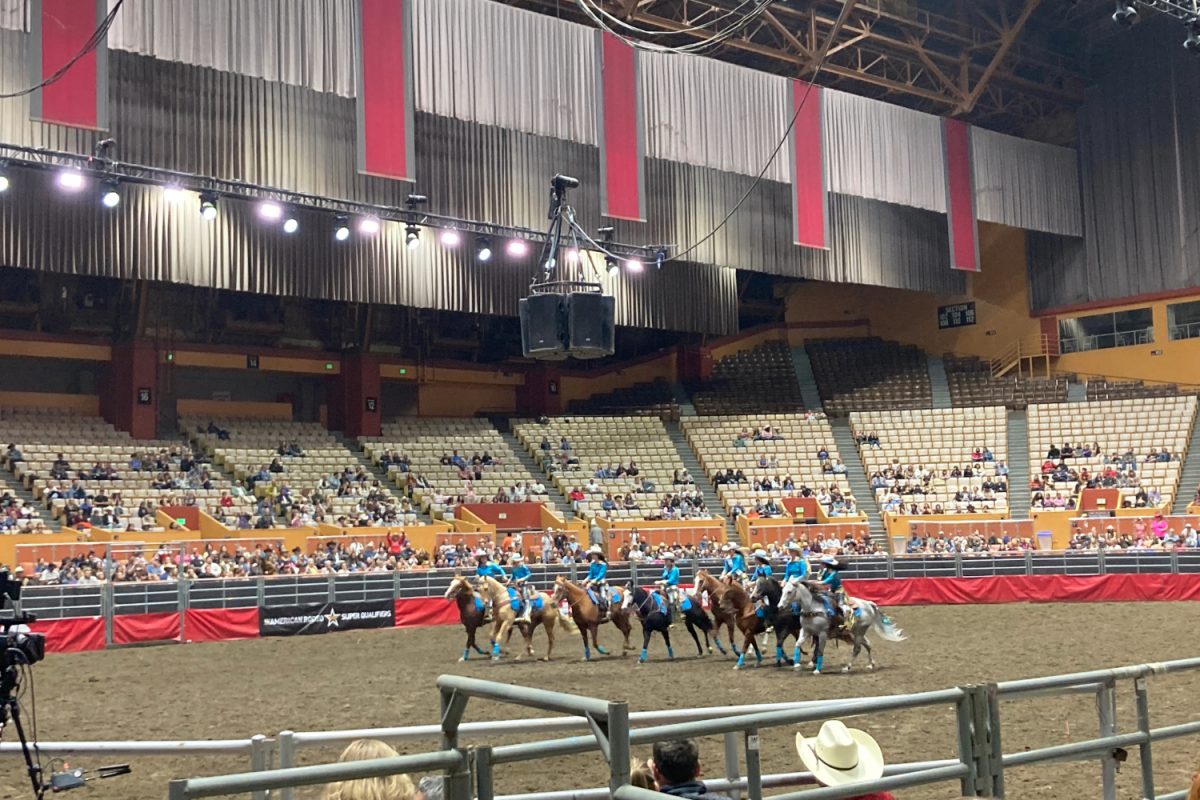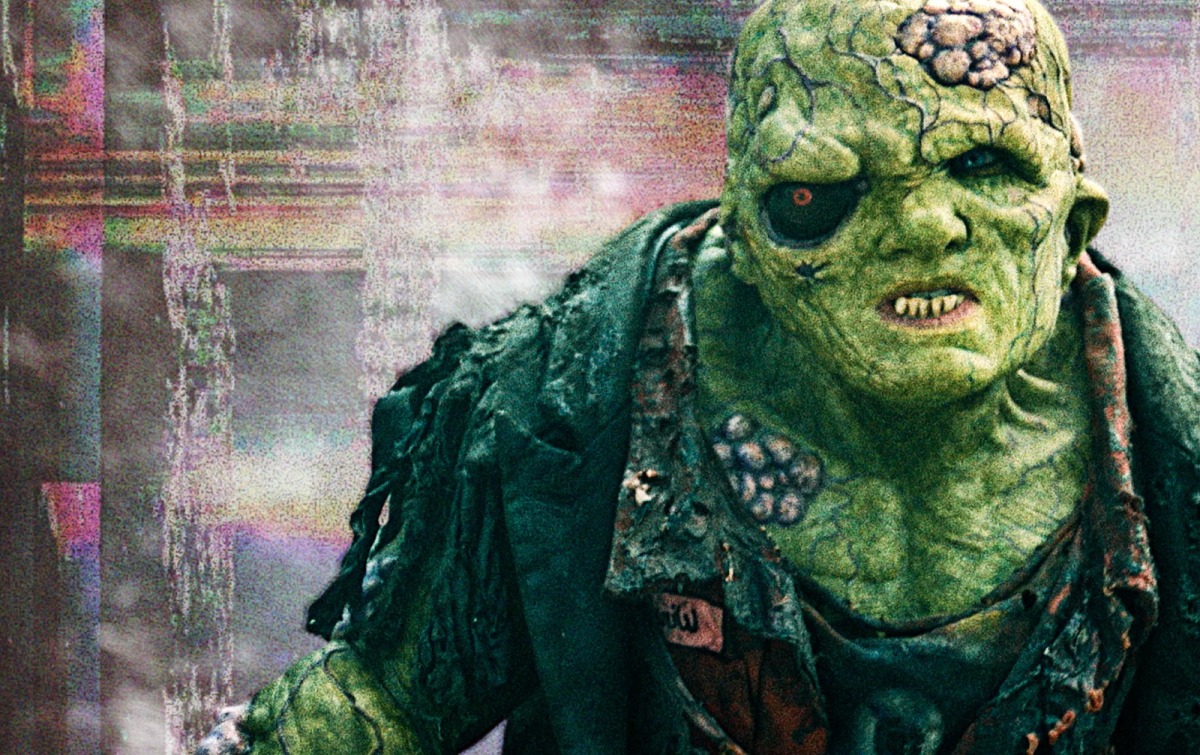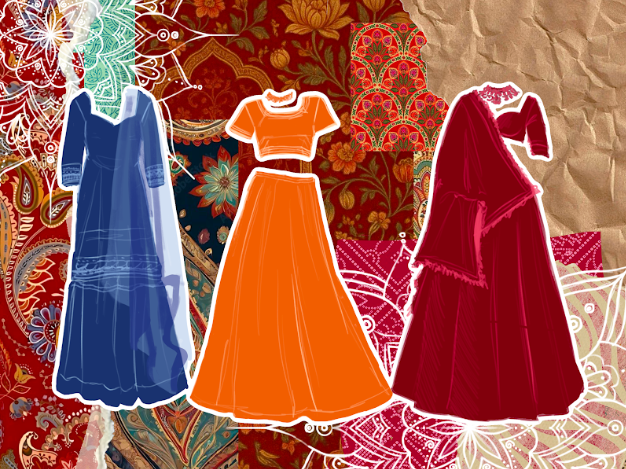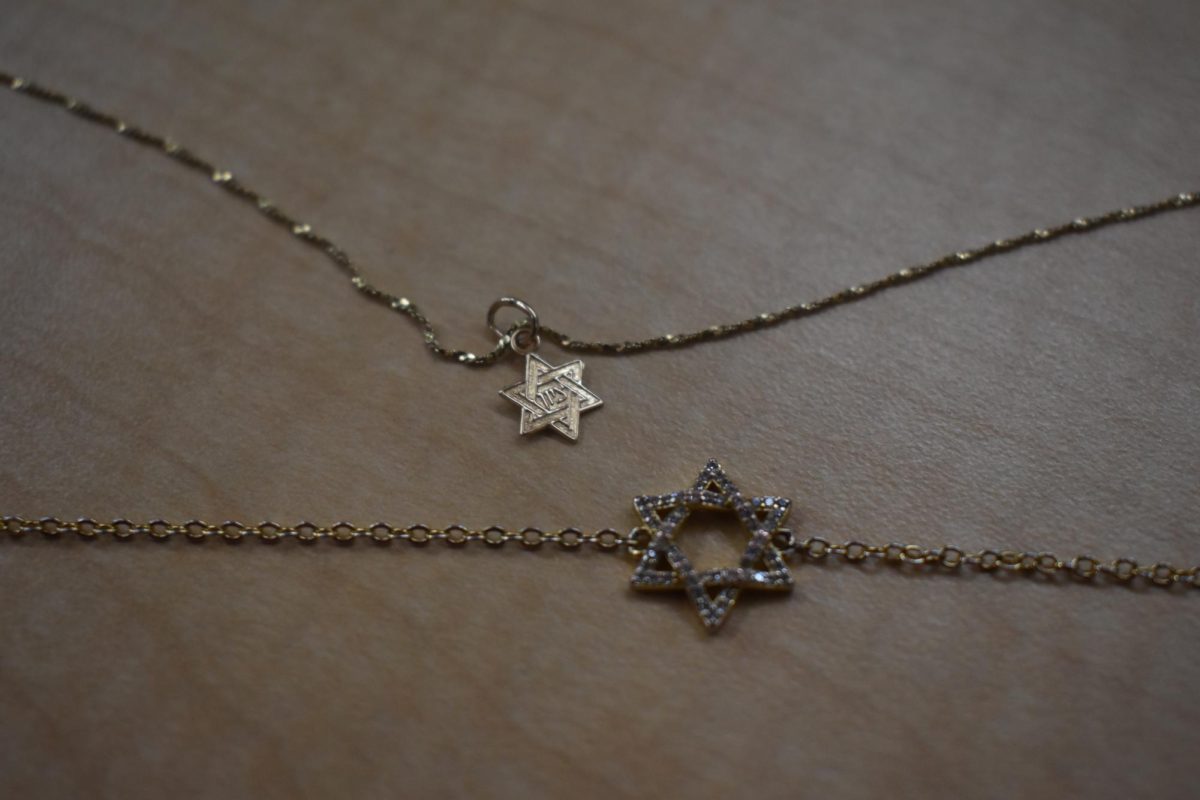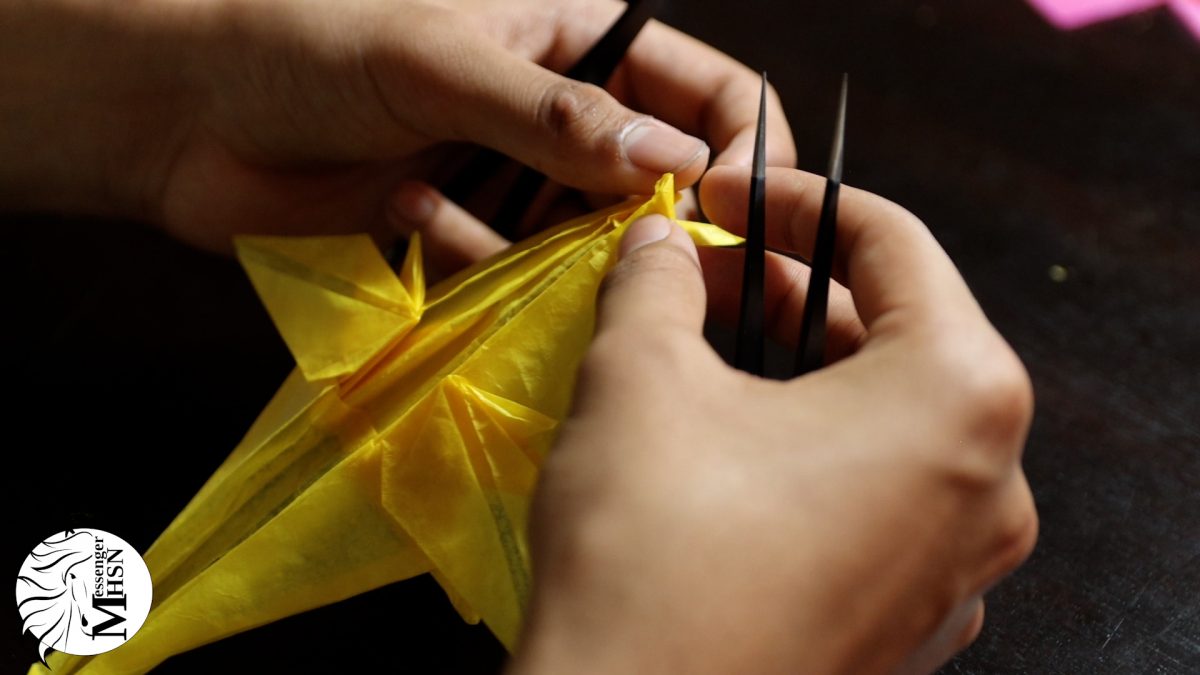The South Asian influence in modern-day pop culture is undeniable. Whether it’s people sipping chai lattes or aligning their chakras, the aestheticization of Indian products and practices is a globally commonplace phenomenon. With a population of 2.10 billion people, the diverse subcontinent boasts an intersectionality of art and culture unlike any other region, despite its overly simplistic portrayal in Western media.
The debate surrounding appropriation versus appreciation is always fierce and scarcely productive. However, appropriation in the context of South Asian culture is more complex than many may think. Yoga studios like CorePower and supplement companies selling ashwagandha proudly market their Indian products as “exotic” and palatable to Western audiences. In fashion, however, credit to Indians is either scarce, strategically hidden or not given at all.
High-end boutiques and online retailers blatantly erase South Asian culture. Recently, clothing brands like PepperMayo have started selling homecoming dresses with dupattas, traditional Indian head coverings, relabeled as “Scandinavian summer scarves,” and classic anarkali-inspired portions dubbed “chic beaded embroidery.” To many in the South Asian community, these moves don’t just read as lazy marketing, but as deliberate choices to separate beauty from its Indian origins.
Brands should not omit an item’s cultural roots and heritage because they believe the culture it comes from does not align with the aesthetic they want to sell. This stems from a deeper ideology: the assumption that certain cultures, particularly South Asian, are too “dirty” or “traditional” to represent elegance. When brands cherry-pick what they credit India for, they reinforce the damaging message that people can only associate India with ancient traditions and practices, rather than modern-day beauty or refinement.
The lack of recognition fuels misinformation about how South Asian culture and fashion have evolved. Rini B. Mehta, a professor at the University of Illinois, hypothesizes that Western media can create negative impressions by emphasizing the portrayal of poverty, which can then seep into consumer consciousness.
“With the coming of New Age spirituality and industry, people in the West developed a fascination with the spiritual side of India and ideas such as yoga and ethnic chic clothing,” Mehta said. “Western media often seem to only focus on famines and floods in India or about going to India for spiritual enlightenment.”
By refusing to associate sophistication and elegance with Indian culture, brands perpetuate the racist stereotype that Indians are dirty, unhygienic or unattractive. In a 2021 survey, three in five Indian Americans said they suffered discrimination over extended periods of time due to their Indian heritage.
Brands argue that fashion is inherently cyclical and global; designers borrow, reimagine and recycle, so giving cultural credit is impossible. However, erasure is not the same as inspiration.
The designers behind Dior’s gold and ivory houndstooth coat from their Paris collection omitting acknowledgement of inspiration from mukaish work, a centuries-old metal embroidery technique from northern India, is not a reinterpretation, but a deliberate rebranding that severs an item from its roots. Fashion openly credits European and even East Asian styles, demonstrating that brands can acknowledge origin when they choose. The refusal to do so with South Asian fashion is not oversight, it’s bias.
Swati Sood is an Indian-Canadian alumna of the National Institute of Fashion Technology (NIFT), India’s premier fashion school, where she completed a post-graduate degree in fashion design and production. She finds the prevalence of Indian designs in fast fashion bittersweet.
“On one hand, I feel this sense of pride seeing elements of the clothes I grew up wearing on the rack in stores like Edikted,” Sood said, “but there’s always that sting afterward. I see people wear these clothes because they’re the latest trend and then later laugh at racist jokes about Indians, not realizing the one who wore the design on their top first was an Indian woman who will forever remain nameless and faceless.”
Sood’s experience perfectly exemplifies the repercussions of the industry’s careless appropriation. Instead of participating in a celebration of culture and globalism, the lack of consumer awareness, fueled by intentionally vague marketing, makes brands complicit in an endless cycle of fashion cultural hierarchy.
Richard Obando, a history and social justice teacher, said deep-rooted racism causes hesitation within the fashion industry to mention the influence of Asian culture in designs.
“Today’s rhetoric surrounding South Asia is dangerous for our youth,” Obando said. “It’s a subcontinent that so many colonial powers plundered for its beauty and wealth, but these days the impression left by the media is strikingly different. Consumers, as a result, can likely not visualize luxury or a sense of elitism in the context of India, something that many people would like to give off when they wear certain clothes.”
Consumers must hold brands accountable, demanding transparency and refusing to reward purposeful omission of credit when it’s due. Only then can the industry move away from a system where people portray India as mystical and ancient, never modern and elegant. Many users have used social media to criticize certain brands for their aversion to mentioning South Asian descent in their clothing out of fear that the product would be less appealing.
Junior Amira Vij grew up in a household with cultural influence from both North and South India and has had experiences that shed light on the West’s appropriation of the subcontinent.
“When I was growing up, I always wore my hair slicked back in a braid. My mom would oil my hair at least every other day. People would call it dirty, and I’d get made fun of,” Vij said. “But now that’s just the trend, being a clean girl with a slickback. When it comes to beauty and fashion, Indian culture did many things first, but it simply wasn’t recognized because Indians couldn’t be considered attractive.”
Fashion has power. It shapes not only how people look, but also how people perceive entire cultures. People mock India, then immediately monetize it. The criticism isn’t an opposition to cosmopolitan fashion or deriving inspiration from other cultures, but an observation of selective credit and the choice to solely attribute an item’s origins when it follows the stereotypical perception of a region. When brands correctly label these pieces, members of the South Asian community can uplift those who wear them. Purposeful recognition of a culture will always equate to celebration. A saree blouse is not an Ibiza-style summer top. A sharara is not a European embellished strappy skirt. This issue is bigger than a homecoming dress; it’s about who gets to be seen as beautiful and who is still not allowed to.
This story was originally published on The Black & White on October 16, 2025.





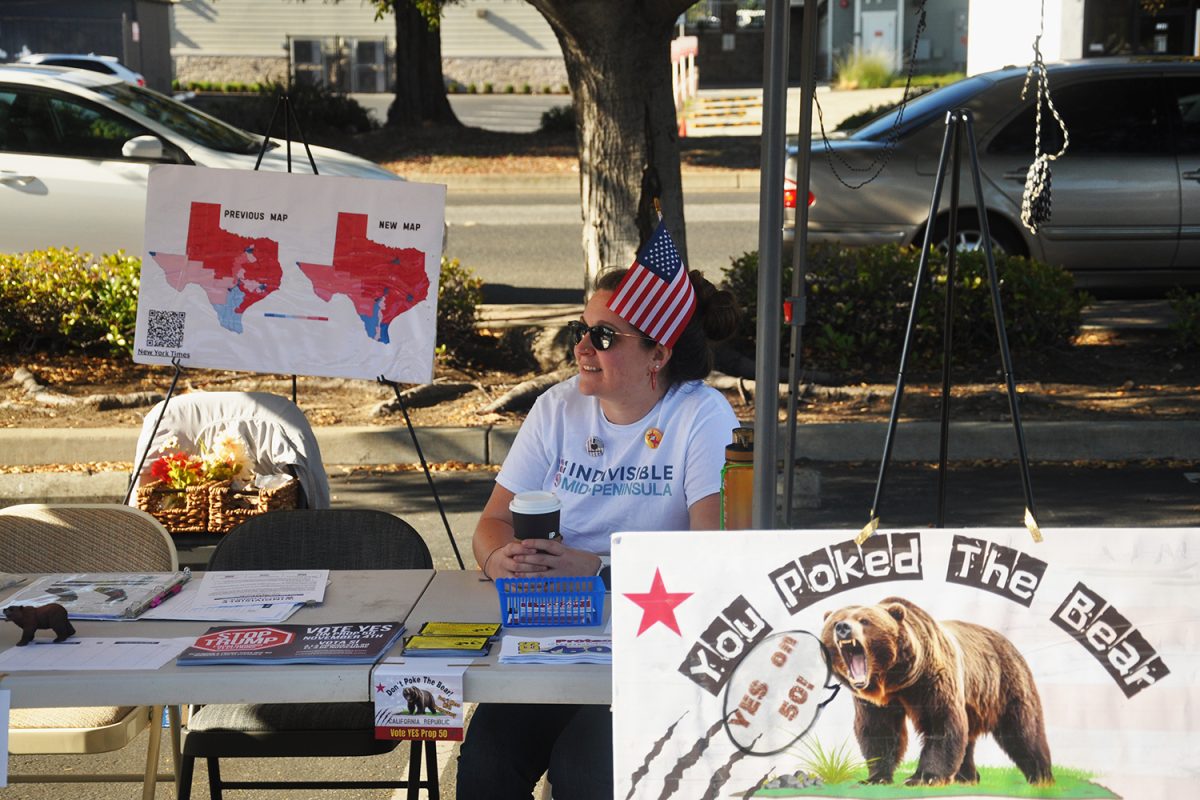




![Senior Dhiya Prasanna examines a bottle of Tylenol. Prasanna has observed data in science labs and in real life. “[I] advise the public not to just look or search for information that supports your argument, but search for information that doesn't support it,” Prasanna said.](https://bestofsno.com/wp-content/uploads/2025/10/DSC_0073-2-1200x800.jpg)
